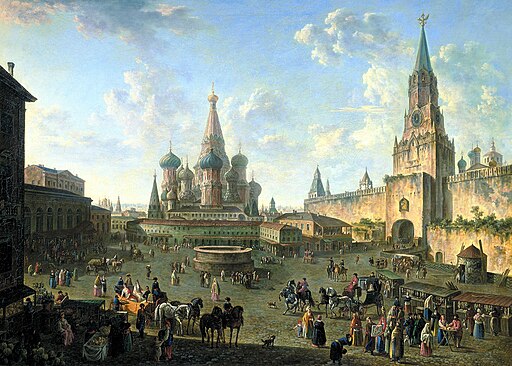
This leaf is from the 600 paged Blue Qur’an, which is a one-thousand-year-old Fatimid Caliphate Qur’an manuscript in Kufic calligraphy.
Created in North Africa for the Great Mosque of Kairouan, also known as the Mosque of Uqba in Tunisia, it is written in gold and decorated in silver on vellum colored with indigo. It is among the most famous works of Islamic calligraphy.
The original manuscript of approximately 600 pages was dispersed during the Ottoman period. Today most of it is located in the National Institute of Art and Archaeology Bardo National Museum in Tunis, with detached folios in various museums worldwide.
This leaf from the Blue Qur’an shows the Sura 30: 28–32. Each sura’s verses are inked in gold on rich indigo. The Blue Qur’an was a display of the Fatimid dynasty’s wealth, power.
While emulating the purple parchment used for Byzantine Imperial manuscripts, it also sought to surpass their rival’s in the Byzantine Empire.
The Fatimid Caliphate was an Islamic caliphate that spanned a large area of North Africa, from the Red Sea in the east to the Atlantic Ocean in the west.
The Fatimids claimed descent from Fatimah, the daughter of the Islamic prophet Muhammad.
In 921, the Fatimids established the Tunisian city of Mahdia as their new capital. In 948, they shifted their capital to Al-Mansuriya, near Kairouan in Tunisia.
Later in 969, they conquered Egypt and established Cairo as the capital of their caliphate.
After the creation of the Blue Qur’an during the late eleventh and twelfth centuries, the Fatimid caliphate declined, and in 1171, Saladin invaded its territory. He incorporated the Fatimid state into the Abbasid Caliphate.
Blue Qur’an
- Title: Blue Qur’an
- Date: 9th century–10th century
- Culture: Fatimid Tunisian Qur’an manuscript in Kufic calligraphy
- Medium: Gold and silver on indigo-dyed parchment
- Dimensions: Height: 30.4 cm (11.9 in); Width: 40.2 cm (15.8 in)
- Category: Islamic Art
- Museum: Metropolitan Museum of Art – MET
The divine art of the Quran
Arabic Proverbs, Quotes, and Sayings
- Arabic Proverbs, Quotes, and Sayings
The Blue Qur’an
A Tour of the Metropolitan Museum of Art
MET Greek and Roman Art Collection
- Statue of a Kouros
- Amathus Sarcophagus
- Mycenaean Terracotta Female Figures
MET Egyptian Art Collection
- The Temple of Dendur
- The Sphinx of Hatshepsut
- William the Faience Hippopotamus
MET Ancient Near Eastern Art Collection
- Sumerian Standing Male Worshiper
- Head of a Beardless Royal Attendant – Eunuch
- Human-Headed Winged Bull (Lamassu)
MET Islamic Art Collection
- Blue Qur’an
- Marble Jar of Zayn al-Din Yahya Al-Ustadar
- The Damascus Room
MET Arts of Africa, Oceania, and the Americas Collection
- Benin Ivory Mask
- African Face Mask – Kpeliye’e
- Sican Funerary Mask – Peru
- Ceremonial Axe – Papua New Guinea
The World Famous Blue Qur’an
~~~
“That person is not a perfect Muslim who eateth his fill and leaveth his neighbors hungry.”
– Muhammad
~~~
Photo Credit: [CC BY 2.5 (https://creativecommons.org/licenses/by/2.5)], via Wikimedia Commons
Popular this Week








 Sponsor your Favorite Page
Sponsor your Favorite Page SEARCH Search for: Search Follow UsJoin – The JOM Membership Program
Sponsor a Masterpiece with YOUR NAME CHOICE for $5
Share this:
- Tweet
